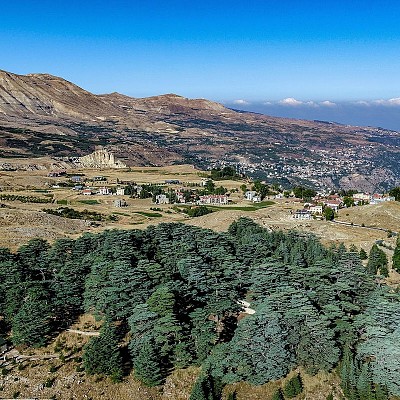Lebanese cuisine is renowned for its rich flavors and diverse dishes, and its desserts are no exception. From sweet pastries to creamy puddings, Lebanese desserts offer a delightful end to any meal. In this guide, we'll explore some of the most popular Lebanese desserts that you must try, highlighting their unique characteristics and flavors.
Baklava – The Iconic Pastry
Baklava is perhaps the most famous Lebanese dessert, made with layers of thin phyllo pastry, filled with crushed nuts and sweetened with honey or syrup. This golden, flaky pastry has gained international acclaim and is often served at celebrations.
One bite of baklava reveals its complex textures and flavors. The crispiness of the phyllo contrasts beautifully with the rich nut filling, usually a blend of walnuts, pistachios, or almonds. Drizzled with fragrant syrup, it creates a harmony that is simply irresistible.
In many Lebanese households, it is common to prepare baklava during the holidays. Families often gather to make it together, showcasing not just the delightful treat itself but also a cherished tradition. Sharing homemade baklava adds an extra layer of joy, making every bite a celebration.
Baklava isn't just a dessert; it's an experience. Its uniqueness comes from various regional recipes, sometimes incorporating flavors like cinnamon or orange blossom. No matter how it’s made, baklava remains a staple that never fails to impress anyone with a sweet tooth.
Knafeh – A Cheesy Delight
Knafeh is a unique dessert that combines pastry and cheese, topped with syrup and often garnished with pistachios. This dish is iconic in Lebanon and varies greatly in its preparation, lending it a distinct charm.
This sweet treat showcases a delightful contrast between texture and flavor. The base is either made from shredded phyllo dough or semolina, with a generous layer of melted cheese that adds a creamy richness. The overall taste is elevated by a drizzle of sweet syrup, creating a truly unforgettable dessert.
What makes knafeh exceptional is its versatility. It can be enjoyed warm or cold, and depending on where you are in Lebanon, you may find different versions, like Knafeh Nabulsieh, which hails from the city of Nablus. Each variant tells a story and evokes memories of cherished gatherings.
In traditional Lebanese celebrations, knafeh takes center stage. Sharing a slice of this delectable dessert signifies hospitality and warmth. Whether celebrating a wedding or a special occasion, knafeh always makes moments enjoyable.
Mouhalabieh – Creamy Pudding
Mouhalabieh is a fragrant milk pudding flavored with rosewater or orange blossom, commonly topped with nuts and syrup, making it a refreshing dessert. Its light consistency and delicate aroma make it a perfect palate cleanser.
This creamy confection often appears on Lebanese tables during festive occasions. The charm of mouhalabieh lies in its simplicity, yet it offers a complex flavor profile derived from natural ingredients. Each spoonful carries a soothing essence, often reminding one of warm summer evenings.
To prepare mouhalabieh, cornstarch is blended with milk and flavored with sweet additions. The result is a beautifully smooth texture that's rich yet not overly heavy. It is commonly garnished with ground pistachios or almonds, enhancing its visual appeal.
Serving mouhalabieh chilled adds to its refreshing nature, making it an ideal choice for warm days. Its versatility allows for creative interpretations of flavors, leading to delightful variations that continue to surprise dessert enthusiasts.
Maamoul – Stuffed Cookies
Maamoul are traditional cookies filled with dates, nuts, or figs, often enjoyed during festive seasons, offering a chewy texture and rich flavor. These cookies carry a side of nostalgia, often reminiscent of family gatherings.
The preparation of maamoul is a true labor of love. Families often come together to prepare these cookies, putting their own spin on the fillings and shaping techniques. The dough is lightly spiced, which enhances the natural sweetness of the filling.
Typically, maamoul cookies are dusted with powdered sugar and can take on various forms. Using decorative molds to impress intricate patterns, they mirror the craftsmanship involved in their creation.
Maamoul can be enjoyed with coffee or tea, making them a perfect accompaniment. Sharing these delightful cookies with friends and family is a gesture of hospitality that reflects the warmth of Lebanese culture.
Halawet El Jibn – A Unique Sweet
Halawet El Jibn is a sweet cheese dessert rolled up with a semolina dough and topped with syrup, providing a delightful combination of textures. This unique dessert is like no other and surely deserves a spot on your must-try list.
The preparation of Halawet El Jibn showcases the artistry in Lebanese cuisine. The semolina dough is cooked until it becomes soft and pliable, and then it is expertly wrapped around a sweet cheese filling. This creates a delightful balance between softness and chewiness.
Once rolled, the dessert is sliced and plated, often garnished with a drizzle of syrup and a sprinkle of crushed pistachios. Halawet El Jibn’s presentation is as inviting as its flavor, making it a favorite at gatherings and celebrations alike.
This dessert's sweet and slightly salty flavor makes it incredibly addictive. Whether enjoyed as part of a festive celebration or as a sweet indulgence after a meal, Halawet El Jibn will leave you craving more.
Satisfy Your Sweet Tooth with Lebanese Delights
Exploring the world of Lebanese desserts is a delightful journey filled with rich flavors and diverse textures. Each dessert reflects the culture and tradition of Lebanon, making them a must-try for anyone interested in Lebanese cuisine. Whether you're indulging in the flaky goodness of baklava or the creamy delight of mouhalabieh, these sweet treats are sure to leave a lasting impression.







































